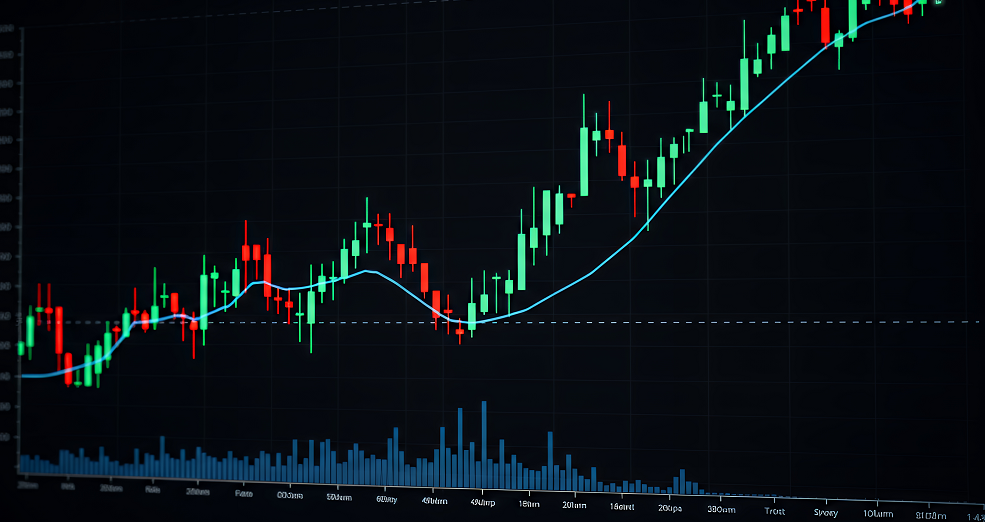IC Markets – Europe Fundamental Forecast | 30 October 2025
What happened in the Asia session?
Today’s Asia session saw cautious but active market conditions driven by central bank announcements, key inflation data from Japan, and anticipation of major geopolitical meetings (U.S.-China, U.S.-Korea). The U.S. dollar gained on hawkish Fed language, the Japanese Yen traded near a multi-month low with high event risk, and Asian equities were mixed, but the Kospi surged on trade optimism. Oil and commodity prices held firm, with all eyes on upcoming diplomatic developments and policy signals for direction into the European session.
What does it mean for the Europe & US sessions?
Today’s markets are starting with a cautiously bullish tone, shaped by recent central bank meetings, major economic data releases, and shifting sentiment in both stocks and currencies. Traders in the European and U.S. sessions should focus on central bank policy statements, critical macro indicators, and high-impact earnings reports as these are driving cross-asset volatility.
The Dollar Index (DXY)
Key news events today
No major news event
What can we expect from DXY today?
The US dollar strengthened modestly on Thursday, October 30, 2025, following Fed Chair Powell’s cautionary remarks that a December rate cut is “far from” certain despite Wednesday’s 25 basis point reduction to 3.75%-4.00%. The DXY traded around 99.09, with EUR/USD at 1.1604 and USD/JPY near 152.63. The BoJ is expected to hold rates at 0.5%, and the ECB is anticipated to keep rates unchanged at 2.15%. Powell’s divided committee (10-2 vote) and emphasis on competing inflation and employment risks signal a more cautious Fed approach ahead, supporting dollar strength in the near term.
Central Bank Notes:
- The Federal Open Market Committee (FOMC) voted, by majority, to lower the federal funds rate target range by 25 basis points to 3.75%–4.00% at its October 28–29, 2025, meeting, marking the second consecutive cut following the 25 basis points reduction in September.
- The Committee maintained its long-term objectives of maximum employment and 2% inflation, noting that the labor market continues to soften, with modest job creation and an unemployment rate edging higher. In comparison, inflation remains above target at around 3.0%.
- Policymakers highlighted ongoing downside risks to economic growth, tempered by signs of resilient economic activity. September’s consumer price index (CPI) came in slightly lower than expected at 3.0% year-over-year, easing inflation pressure but still warranting vigilance given tariff-driven price effects.
- Economic activity expanded modestly in the third quarter, with GDP growth estimates around 1.0% annualized; however, uncertainty remains elevated amid persistent global trade tensions and the U.S. government shutdown, which is impacting data availability.
- The updated Summary of Economic Projections reflects an anticipated unemployment rate averaging approximately 4.5% for 2025, with headline and core personal consumption expenditures (PCE) inflation projections holding near 3.0%, indicating a slow easing path ahead.
- The Committee emphasized its flexible, data-dependent approach and underscored that future policy adjustments will be guided by incoming labor market and inflation data. As in prior meetings, there was dissent, including one member advocating a more aggressive 50-basis-point cut.
- The FOMC announced the planned conclusion of its balance sheet reduction (quantitative tightening) program, intending to cease runoff in the near term to maintain market stability, with Treasury redemption caps held steady at $5 billion per month and agency mortgage-backed securities caps at $35 billion.
- The next meeting is scheduled for 9 to 10 December 2025.
Next 24 Hours Bias
Weak Bearish
Gold (XAU)
Key news events today
No major news event
What can we expect from Gold today?
Gold prices are staging a modest recovery above $4,000 per ounce following the Federal Reserve’s expected 25 basis point rate cut. However, upside momentum remains limited as progress toward a US-China trade agreement has reduced safe-haven demand. The precious metal recently pulled back from its October 20 record high of $4,381, experiencing its first weekly loss in ten weeks amid profit-taking and easing geopolitical tensions.
Next 24 Hours Bias
Medium Bullish
The Euro (EUR)
Key news events today
German prelim CPI m/m (8:00 am GMT)
Spanish flash CPI y/y (8:00 am GMT)
German prelim GDP q/q (9:00 am GMT)
Main refinancing rate (1:15 pm GMT)
Monetary policy statement (1:15 pm GMT)
ECB press conference (1:45 pm GMT)
What can we expect from EUR today?
ECB’s widely anticipated decision to hold rates steady for a third consecutive meeting. The euro strengthened modestly against the dollar, trading at 1.1616, as markets digested the ECB’s commitment to its current “good place” policy stance. While inflation remains near the 2% target and has shown signs of stabilization, the eurozone faces significant challenges from France’s deepening fiscal and political crisis, Germany’s modest growth prospects despite fiscal stimulus, and ongoing trade tensions with the United States and China..
Central Bank Notes:
- The Governing Council of the ECB kept the three key interest rates unchanged at its meeting on 30 October 2025. The main refinancing rate remains at 2.15%, the marginal lending facility at 2.40%, and the deposit facility at 2.00%. This decision reflects policymakers’ assessment that the current monetary stance remains consistent with medium-term price stability, while incoming data confirm a gradual return of inflation towards the target.
- Recent indicators point to stable price dynamics. Headline inflation remains near the 2% mark, with energy prices contained and food inflation easing slightly after earlier supply bottlenecks. Wage growth continues to moderate, contributing to the slowdown in domestic cost pressures. The ECB reiterated its commitment to a data-driven, meeting-by-meeting approach and emphasized flexibility in the face of uncertain global financial conditions.
- Eurosystem staff projections have not been materially altered since September. Headline inflation averages remain at 2.0% for 2025, 1.8% for 2026, and 2.0% for 2027. Recent softening in producer prices and subdued pipeline pressures suggest limited upside risks to inflation, though geopolitical tensions and potential commodity shocks continue to pose uncertainties to the outlook.
- Euro area GDP growth remains on track with earlier forecasts, projected at 1.1% for 2025, 1.1% for 2026, and 1.4% for 2027. Forward-looking indicators, including PMIs and industrial sentiment surveys, signal some stabilization in activity following weakness in the third quarter. Public investment and recovering export activity are expected to offset softer private sector demand in the near term.
- The labor market remains resilient, with unemployment rates at multi-decade lows and participation rates strong. Real income growth continues to support household spending, even as consumption growth normalizes from earlier highs. Financing conditions remain favorable, aided by stable banking sector liquidity and improved credit demand among small and medium-sized firms.
- Business sentiment remains mixed, reflecting lingering uncertainty over global trade policy and the path of US tariffs. However, easing supply chain costs and improved export competitiveness due to softer exchange rates are providing some relief to manufacturing and external-oriented sectors.
- The Governing Council reaffirmed that future decisions will depend on an integrated assessment of incoming data—covering inflation trends, financial conditions, and the state of policy transmission. The Council emphasized that no pre-set path for rates exists; keeping all options open should the economic outlook shift markedly.
- Balance sheet reduction continues smoothly, with holdings under the APP and PEPP declining as reinvestments have ceased. The ECB confirmed that the pace of portfolio runoff remains in line with its previously communicated normalization plan, supporting a gradual withdrawal of monetary accommodation in a predictable manner.
- The next meeting is on 17 to 18 December 2025
Next 24 Hours Bias
Weak Bearish
The Swiss Franc (CHF)
Key news events today
No major news event
What can we expect from CHF today?
The Swiss franc faces near-term weakening pressure on October 30 as improved global risk sentiment from US-China trade optimism weighs on safe-haven demand. The SNB’s commitment to keeping rates at 0% with no deflation risks, combined with rebounding investor sentiment from deeply negative levels, provides some stability. However, Switzerland’s slowing economic growth outlook (1-1.5% in 2025, under 1% in 2026) amid US tariff headwinds and the franc’s significant year-to-date strength suggest limited upside. Key catalysts today include the ECB rate decision (expected hold at 2%) and the outcome of Trump-Xi trade talks at APEC.
Central Bank Notes:
- The SNB maintained its key policy rate at 0% during its meeting on 25 September 2025, pausing a sequence of six consecutive rate cuts as inflation stabilized and the Swiss franc remained firm.
- Recent data showed a modest rebound in inflation, with Swiss consumer prices rising 0.2% year-on-year in August after staying above zero for three consecutive months; this helped alleviate fears of deflation that were mounting earlier in the year.
- The conditional inflation forecast remains broadly unchanged from June: headline inflation is expected to average 0.2% in 2025, 0.5% in 2026, and 0.7% in 2027. The risk of a negative rate move has diminished for now, but the SNB retains flexibility should inflationary pressures weaken again.
- The global economic outlook has deteriorated further, weighed down by heightened trade tensions—especially with the U.S.—and ongoing uncertainty in key Swiss export markets.
- Swiss GDP growth moderated in Q2 after a strong Q1 boosted by front-loaded U.S. exports. The SNB expects growth to slow and remain subdued, with forecasted GDP expansion between 1% and 1.5% in both 2025 and 2026.
- Labor market sentiment in the Swiss industrial sector has softened on concerns over export competitiveness and potential adjustments to production, but the overall growth outlook stays broadly unchanged
- The SNB reiterated its readiness to respond as needed if deflation risks re-emerge, emphasizing its commitment to medium-term price stability and a robust, transparent communication policy, with the introduction of more detailed monetary policy minutes beginning in October.
- The next meeting is on 11 December 2025.
Next 24 Hours Bias
Weak Bullish
The Pound (GBP)
Key news events today
No major event
What can we expect from GBP today?
The British pound faces a challenging environment characterized by heightened budget uncertainty, expectations for accelerated BoE rate cuts, falling gilt yields, and a resilient US dollar. The combination of a potential £20+ billion fiscal shortfall, productivity downgrades, and anticipated tax increases has created a perfect storm for sterling weakness. While easing shop price inflation and resilient retail sales provide some positive economic signals, they have been insufficient to offset fiscal and monetary policy concerns. The pound is likely to remain under pressure until the November 26 budget provides clarity on the government’s fiscal strategy and the BoE’s November 6 meeting reveals the central bank’s policy trajectory.
Central Bank Notes:
- The Bank of England’s Monetary Policy Committee (MPC) voted on 18 September 2025 by a majority (expected split likely 7–2 or 6–3) to hold the Bank Rate steady at 4.00%, following the rate cut in August. Most members cited persistent inflation and mixed indicators on growth and employment, while a minority favored further easing due to the cooling labor market and subdued GDP growth.
- The Committee decided to decrease the pace of quantitative tightening, planning to reduce the stock of UK government bond purchases by £67.5 billion over the next 12 months, instead of the prior £100 billion pace, with the gilt balance now standing at nearly £558 billion. This reflects increased volatility in bond markets and a shift to a more gradual approach.
- Headline inflation rose unexpectedly to 3.8% in July and is projected at 4% for September, above the Bank’s 2% target. Price pressures are driven by regulated energy costs and ongoing food price increases. While previous disinflation has been substantial, core inflation remains elevated and sticky.
- The MPC expects headline inflation to remain above target through Q4, with a resumption of the downward trend projected for early 2026 as energy and regulated price pressures abate. The Committee remains watchful for signs of persistent inflation despite previous policy tightening.
- UK GDP growth is stagnant, with business and consumer activity subdued. Recent labor market data show rising unemployment rates (now at 4.7%) and stabilizing wage growth (holding near 5%), indicating slack but continued wage price pressure. The Committee remains cautious amid lackluster demand and soft survey sentiment.
- Pay growth and employment indicators have moderated further, alongside confirmation from business surveys that pay settlements are slowing. The Committee expects wage growth to decelerate significantly through Q4 and the rest of 2025.
- Global uncertainty persists due to volatile energy prices, supply chain disruptions linked to Middle East conflicts, and renewed trade tensions. The MPC remains vigilant in tracking transmission of external cost/wage shocks to UK inflation.
- Risks to inflation are considered two-sided. While subdued domestic growth and softening labor activity suggest scope for easing, persistent inflation requires caution. The MPC anticipates a slow, gradual reduction path in rates, continuing its data-dependent approach with careful adjustment as warranted by economic developments.
- The Committee’s bias remains toward maintaining a restrictive monetary policy stance until firmer evidence emerges that inflation will return sustainably to the 2% target. All future decisions will remain highly data dependent, with a strong emphasis on evolving demand, inflation expectations, costs, and labor market conditions.
- The next meeting is on 6 November 2025.
Next 24 Hours Bias
Medium Bearish
The Canadian Dollar (CAD)
Key news events today
No major news event
What can we expect from CAD today?
The Canadian dollar strengthened following the Bank of Canada’s surprise hawkish guidance that the current 2.25% policy rate is likely appropriate, effectively signaling an end to the easing cycle. The loonie traded near 1.3889 per USD, its strongest level in four weeks. However, significant headwinds remain: inflation at 2.4% exceeds the central bank’s target, GDP growth is tracking around 0.8% in Q3, unemployment sits at a multi-year high of 7.1%, and US trade uncertainty continues to cloud the outlook. Oil prices near $60 per barrel provide only modest support. While the September employment surprise (60,400 jobs) offered encouragement, underlying labor market weakness persists with elevated youth unemployment and underemployment.
Central Bank Notes:
- The Council noted that U.S. tariff tensions have eased slightly following early progress in bilateral discussions, though the external trade environment remains fragile. Businesses continue to hold back on long-term investment, with the Bank highlighting that sustained clarity on U.S. trade policy is needed to restore confidence.
- The Bank acknowledged that uncertainty persists despite the softer U.S. tone, as incoming data show limited improvement in export orders. The manufacturing sector has stabilized but remains below pre-2024 output levels, reflecting weak global demand and cautious corporate spending.
- Canada’s economy showed tentative signs of recovery in early Q4, with GDP estimated to expand by 0.3% in October after two quarters of contraction. Mining and energy activity strengthened modestly, aided by steady crude demand, while goods exports posted a fractional gain.
- Service sector growth remained uneven, supported mainly by tourism-related and technology services. However, retail spending and household consumption were subdued, constrained by slower job creation and lingering consumer caution. The Bank judged overall momentum as fragile but improving marginally.
- Housing activity showed modest reacceleration in major urban markets as mortgage rates stabilized near record lows. Nonetheless, affordability pressures and stricter lending standards continue to cap overall resale volumes, leading to only a gradual recovery in the housing sector.
- Headline CPI inflation rose to 2.1% in October, reaching the Bank’s target for the first time in six months. The increase was driven by higher energy prices and a modest uptick in food and shelter costs. Core inflation measures remained stable, suggesting underlying price pressures are contained.
- The Governing Council reiterated its data-dependent stance, indicating that the current policy rate remains appropriate amid tentative growth and balanced inflation risks. Officials noted that while additional stimulus is not ruled out, the emphasis has shifted toward monitoring the sustainability of the recovery rather than immediate rate adjustments.
- The next meeting is on 17 to 18 December 2025.
Next 24 Hours Bias
Weak Bearish
Oil
Key news events today
No major new event
What can we expect from Oil today?
Oil markets are characterized by cautious optimism as WTI trades near $60 and Brent near $65 per barrel. The week’s major developments include an unexpectedly large 6.86-million-barrel draw in US crude inventories that challenged oversupply concerns, new US sanctions on Russian oil giants Rosneft and Lukoil creating supply uncertainty, India’s adjustment of Russian crude purchases in response to sanctions, ongoing US-China trade negotiations that could ease economic tensions, and the Federal Reserve’s 25-basis-point rate cut providing modest support.
Next 24 Hours Bias
Medium Bearish




